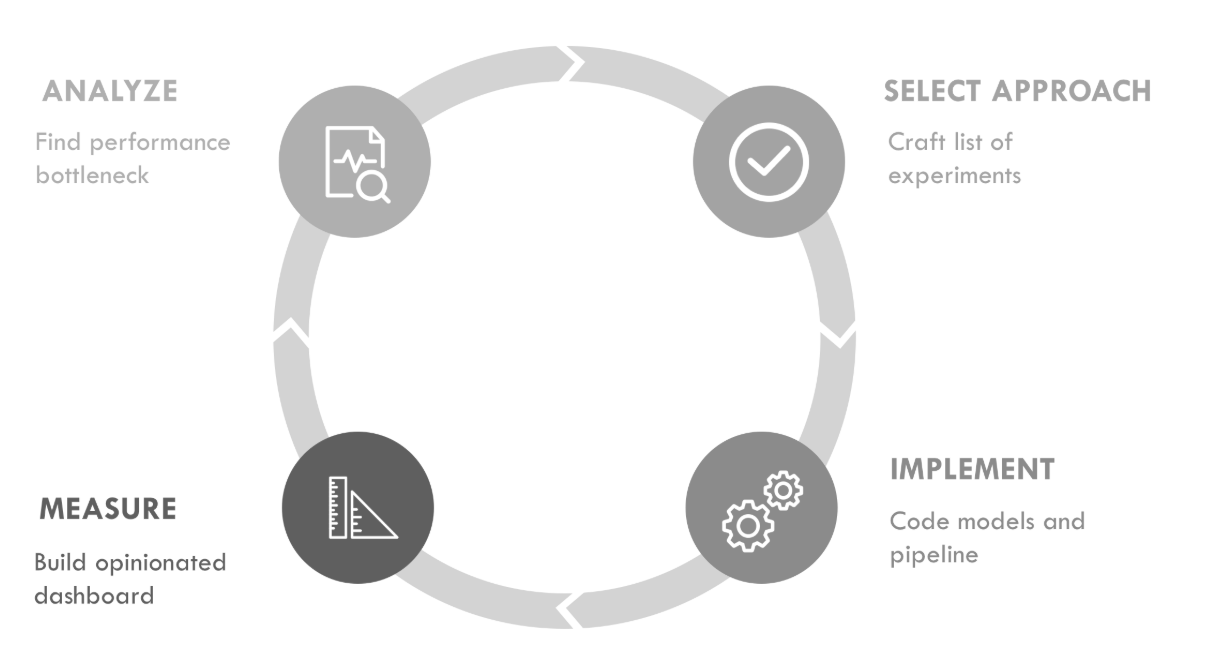Chapter 7. Using Classifiers for Writing Recommendations
The best way to make progress in ML is through repeatedly following the iterative loop depicted in Figure 7-1, which we saw in the introduction to Part III. Start by establishing a modeling hypothesis, iterate on a modeling pipeline, and perform detailed error analysis to inform your next hypothesis.

Figure 7-1. The ML loop
The previous chapters described multiple steps in this loop. In Chapter 5, we covered how to train and score a model. In Chapter 6, we shared advice on how to build models faster and troubleshoot ML-related errors. This chapter closes an iteration of the loop by first showcasing methods to use trained classifiers to provide suggestions to users, then selecting a model to use for the ML Editor, and finally combining both to build a working ML Editor.
In “ML Editor Planning” we outlined our plan for the ML Editor, which consists of training a model that classifies questions into high- and low-score categories and use this trained model to guide users to write better questions. Let’s see how we can use such a model to provide writing advice to users.
Extracting Recommendations from Models
The goal of the ML Editor is to provide writing recommendations. Classifying a question as good or bad is a first step in this direction since it makes it possible to display the current quality of a question to a user. ...
Get Building Machine Learning Powered Applications now with the O’Reilly learning platform.
O’Reilly members experience books, live events, courses curated by job role, and more from O’Reilly and nearly 200 top publishers.

